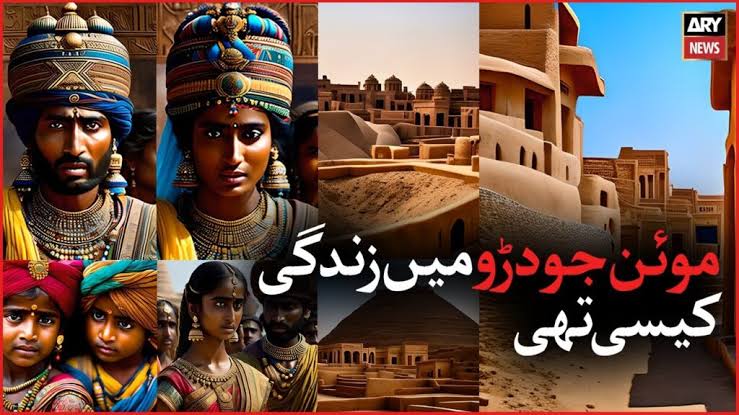Makli: Rehmatullah Mirbahar, wondering what might have been the life of people in Moen Jo Daro 5000 years ago?
Mirbahar spent days and nights learning artificial intelligence and reading about ancient history.
Mirbahar created specific images showing Moen Jo Daro’s life, which went viral on social media.

An artist from a village in Pakistanis Southern Sindh Province used artificial intelligence to reimagine life in Moe. Jo Daro. One of the most striking monuments from the dawn of civilization.
Rehmatullah Mirbahar, a 34-year-old young artist and computer operator at the Thatta district health department, worked day and night to learn artificial intelligence. He used tutorials from YouTube and websites to teach himself how to create art using artificial intelligence.
He was surprised after receiving a broad appreciation from worldwide—the site, which was inhabited between 2500 and 1500 BC before being abandoned and rediscovered in 1921.
The city is the largest settlement of the ancient Indus Valley Civilization and one of the world’s earliest major cities.
Mirbahar told the news, “When I first created these images, I did not upload them because I didn’t think people would like them”. He presented his views while sitting at his computer in a small room in Makli.
Not far from the site of an ancient city with millions of tombs and graves. The place has one of the largest graveyards and is a UNESCO World Heritage Site.
” But then I decided to upload them, and I can’t believe how they got viral. The response was “Great”.
“I have received calls from Germany, from the United States, and from India as well”.
Mirbahar invested almost three months in learning AI tools and said I aimed to show the world how people lived in the ancient city of Moen Jo Daro and what kind of life they had.
As per Mirbahar, artificial intelligence was the ideal choice for the project because it gives results on available online data.
Mirbahar had to step in on several occasions. He said, drawing on his knowledge and photography from the ruins of Moen Jo Daro and other Navient sites in Sindh to learn more about the area’s ancient architecture, culture and religion.
“Whatever came to my mind about Moen-Jo-Daro, I reimagined through AI.
“It gives 50 or 60% results based on the data it has and needs modification at how people’s faces appear. We have to fix their faces and change their colours, and the rest of the modifications are down with the help of AI”.
Additionally, some critics of the final images have noted missing components.
“Many people said there should be a river that flowed here, there should be greenery here, and many people criticized it on social media.”
Furthermore, he also added, “In the future, I will update this to Moen-Jo-Daro version two. I will fix the mistake appointed out by the people in this version”.
“I am working with civilization out of Pakistan, too. In the future, all these will be reimagined with AI”.
He said, “My family scolded me a lot about what are you doing, what have you done, wasteful spending”.
But, “whatever I am today is because of this computer, and my family members are also happy”.
Read more:
Deep Dive – What is Linear Regression in Machine Learning?
Alibaba Invites Businesses to Trial its New AI Chatbot














